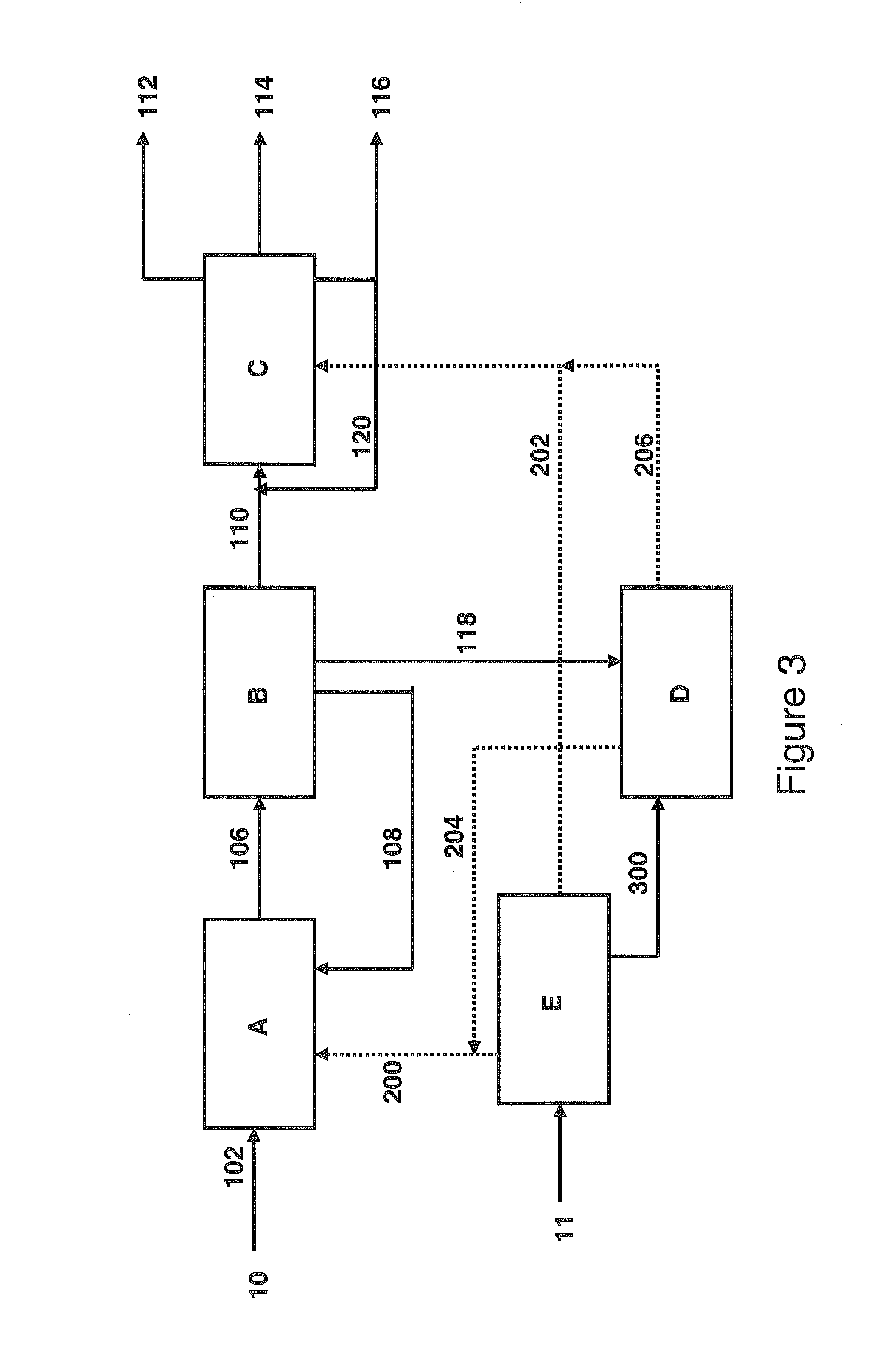Carbon material conversion process comprising two liquefaction stages in a boiling bed in the presence of hydrogen generated by non-fossil sources
a technology of non-fossil source hydrogen and carbon material, which is applied in the direction of hydrocarbon oil treatment products, sustainable manufacturing/processing, energy input, etc., can solve the problems of general production of greenhouse gas emissions and achieve the effect of limiting greenhouse gas emissions
- Summary
- Abstract
- Description
- Claims
- Application Information
AI Technical Summary
Benefits of technology
Problems solved by technology
Method used
Image
Examples
example 1
Not in Accordance with the Invention
[0129]Coal of the Illinois No. 6 type was pretreated, then having an ash content close to 6% by weight of dry coal. The coal is then subjected to a two-stage liquefaction according to the H-Coal TS® process. The operating conditions of the liquefaction appear in Table 1. The hydrogen that is necessary to the liquefaction originates from a gasification of coal. The performance levels of the overall coal liquefaction chain are described in Table 3.
TABLE 1Operating Conditions of the Two-Stage LiquefactionCatalystNiMo / AluminaTemperature of Reactor R1 (° C.)410Temperature of Reactor R2 (° C.)440Pressure, MPa17VVH of R1 (kg / h of Dry Coal / kg of1.2Catalyst)VVH of R2 (kg / h of Dry Coal / kg of1.2Catalyst)Input H2 (Nm3 / kg of Dry Coal)2.8Liquid / Carbon Recycling1.1
[0130]According to Table 3, the direct liquefaction process H-Coal TS® produces 3.9 barrels of liquid hydrocarbons (LPG+naphtha+diesel) per ton of dry coal without ash. This value integrates the produc...
example 2
According to the Invention
[0132]The liquefaction of Example 1 was repeated under the same operating conditions (Table 1). The hydrogen originates from electrolysis of water using electricity generated by a nuclear power plant. The 388° C.+ fraction, obtained after the separation of the effluent from the liquefaction and representing approximately 12% by weight of the coal liquefiers (organic fraction+undissolved coal), is not upgraded as fuel in this example. It is subjected to combustion (or oxycombustion by using the O2 that is produced by electrolysis), then producing heat and CO2.
[0133]The performance levels of the liquefaction that use hydrogen generated by a non-fossil source are synthesized in Table 3.
TABLE 3Performance Levels of the Direct Pathway of Liquefaction of Coal for theProduction of Fuels - H-Coal TS ® Process - Addition of Hydrogenfrom Fossil and Non-Fossil SourcesExample 1Example 2Hydrogen SourceGasificationElectrolyzerCarbon Feedstock for100100Liquefaction andGas...
PUM
 Login to View More
Login to View More Abstract
Description
Claims
Application Information
 Login to View More
Login to View More - R&D
- Intellectual Property
- Life Sciences
- Materials
- Tech Scout
- Unparalleled Data Quality
- Higher Quality Content
- 60% Fewer Hallucinations
Browse by: Latest US Patents, China's latest patents, Technical Efficacy Thesaurus, Application Domain, Technology Topic, Popular Technical Reports.
© 2025 PatSnap. All rights reserved.Legal|Privacy policy|Modern Slavery Act Transparency Statement|Sitemap|About US| Contact US: help@patsnap.com



